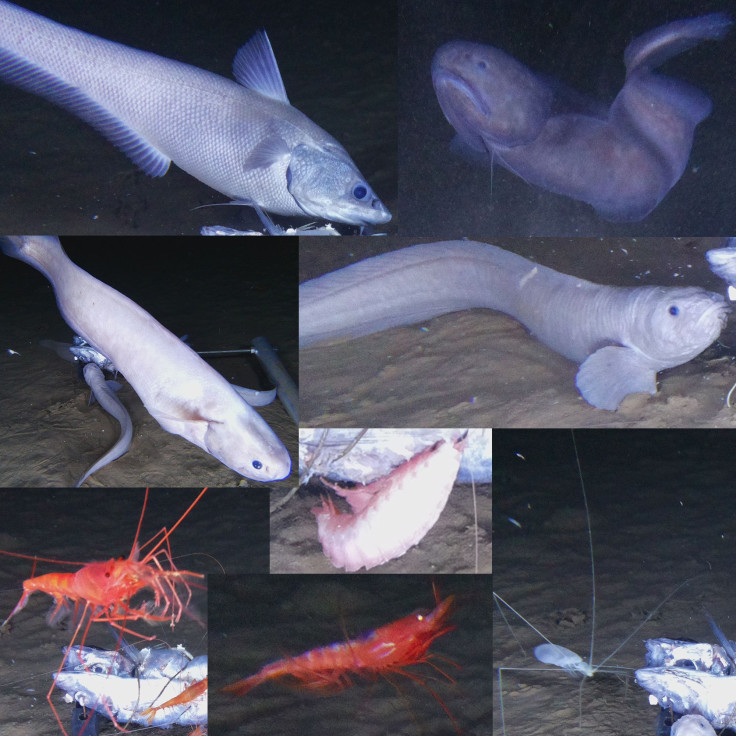Three New Snailfish Species, Elusive Long-Legged Creatures Spotted On Deep-Sea Expedition

In a new expedition to one of the deepest places on Earth, some 26,000-feet below sea-level, an international team of scientists discovered three new elusive species of the snailfish as well as some very rare long-legged creatures.
The fishes, newest members of the Liparidae family, look very different from the preconceived notion of deep-sea creatures. They had small, translucent jellylike bodies with no scales and appear adept at living in high-pressure deep-sea environments, where not many marine creatures can survive, not even their competitors or predators.
"Their gelatinous structure means they are perfectly adapted to living at extreme pressure and in fact, the hardest structures in their bodies are the bones in their inner ear which give them balance and their teeth,” Thomas Linley, a member of the team behind the expedition, said in a statement. “Without the extreme pressure and cold to support their bodies, they are extremely fragile and [would] melt rapidly when brought to the surface."
Linley and team, which included as many as 40 scientists from 17 different countries, found the elusive fishes while exploring the depths of the Atacama Trench in the eastern Pacific Ocean, some 160km off the coast of Peru and Chile.
As part of the effort, aimed at monitoring deep-sea life, the group deployed landers integrated with HD cameras and baited traps into Richards Deep or the deepest part of the 6,000km-long trench. The landers were dropped overboard as many as 27 times, capturing more than 11 hours’ worth of deep-sea footage as well as some 11,000 photographs, including those the distinct snailfish.
Since the discovery, the snailfish species have been temporarily named "the pink, the blue, and the purple Atacama Snailfish." More importantly, the team didn’t just record their movement and interaction in the secret world, but also managed to capture and retrieve one of them in good condition for further analysis. This specimen, as the researchers explained, followed its prey into the trap and was carefully preserved.
"As the footage clearly shows, there are lots of invertebrate prey down there and the snailfish are the top predator, they seem to be quite active and look very well-fed,” Linley added in the statement.
That said, it is worth noting the snailfish wasn’t the only find of the expedition. The lander systems deployed by the team even recorded a very rare deep-sea creature, an isopod known as Munnopsids.
These creatures are as big as an adult human hand and draw immediate attention with their extraordinarily long legs and small body. They swim backward and upside down to propel themselves on their ventral sides and stretch out long legs after correcting the posture at the sea floor.
"We don't know what species of munnopsid these are but it's incredible to have caught them in action in their natural habitat - especially the flip they do as they switch from swimming to walking mode," Linley concluded.
The discovery of the snailfish is set to be presented at Newcastle University’s 2018 Challenger Conference, running between Sept. 10 and 14.

© Copyright IBTimes 2024. All rights reserved.











